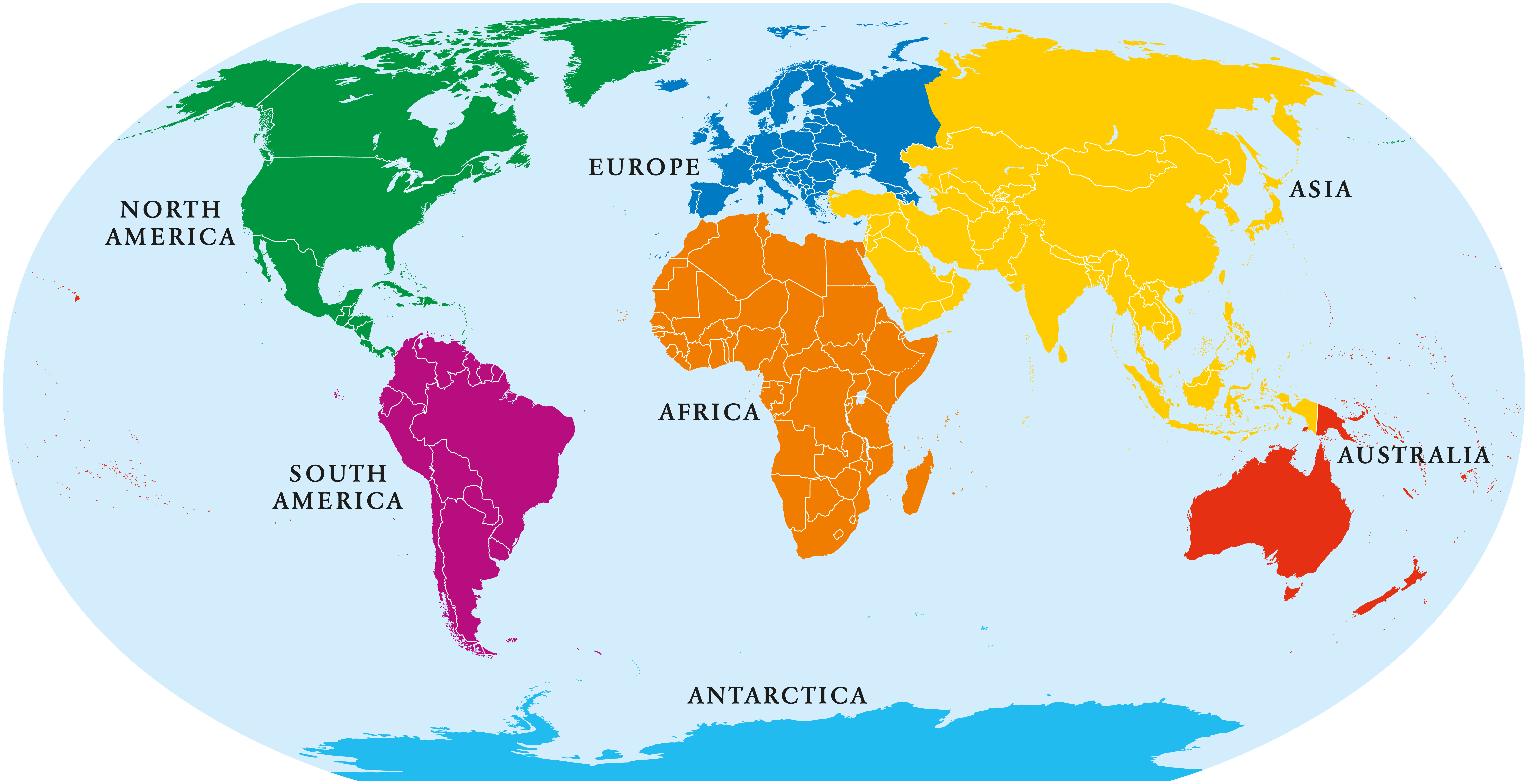As a young kid, you were no doubt told by your teachers how many continents there are on Earth. However, the answer you were given most likely depends on where (and when) you were taught.
In the US, students are generally told that there are seven continents: North America, South America, Europe, Asia, Africa, Australia, and Antarctica. In Europe, however, it’s more often taught there are only six continents: Europe, Asia, Africa, Antarctica, Australia/Oceania, and America (which is treated as a single continent).
Others would argue there are even fewer continents. Some geographers believe that the distinction between Europe and Asia is arbitrary and primarily based on historical geopolitical distinctions, not physical ones. Simply look at a map and it’s plain to see that Europe and Asia are the same landmass. Furthermore, their histories and cultures have been deeply intertwined for centuries.
Some scholars contend that Europe was an invention of the elites, arrogantly designed to emphasize the exceptional nature of “the West” and its culture. As such, they have argued that Europe and Asia should be treated as a single continent: Eurasia.
“To imagine Europe and Asia as constituting equivalent ‘continents’ has long been recognized as the ethnocentric cornerstone of a Western, or Euro-American, world view,” Chris Hann, founding Director of the Max Planck Institute for Social Anthropology, wrote in a 2016 paper.
“The amalgam Eurasia corrects this bias by highlighting the intensifying interconnectedness of the entire landmass in recent millennia,” Hann added.
The seven-continent model most commonly taught in the US.
Image credit: Peter Hermes Furian/Shutterstock.com
Historian Marshall Hodgson went even further, according to Hann, and put forward the case that Europe, Africa, and Asia are all part of one continental complex: Afro-Eurasia. After all, the landmass is completely traversable by land and not broken up by any water (except the Suez Canal in Egypt, which was built by humans in the 19th century).
There is also a five-continent model, as illustrated by the five rings on the Olympic flag, with each circle symbolizing each inhabited continent of the planet: Africa, Asia, America, Europe, and Oceania/Australia.
To go back a bit, we should define the meaning of the word continent. It stems from the Latin term “terra continens”, meaning continuous land, and is used to refer to large land masses.
It’s often suggested that the continents align with the tectonic plates of Earth, but even this system of categories unearths some problems. Under this definition, Eurasia is a single continent and there are also numerous “minor plates” of significant size that don’t fit in with the model, like the Indian Plate.
According to a definition by the Glossary of Geology cited in a 2017 study: “It is generally agreed that continents have all the following attributes: (1) high elevation relative to regions floored by oceanic crust; (2) a broad range of siliceous igneous, metamorphic, and sedimentary rocks; (3) thicker crust and lower seismic velocity structure than oceanic crustal regions; and (4) well-defined limits around a large enough area to be considered a continent rather than a microcontinent or continental fragment.”
However, the authors added: “To our knowledge, the last point – how ‘major’ a piece of continental crust has to be to be called a continent – is almost never discussed.”
In other words, even the most scientific of definitions has some degree of subjectivity. Try as we might, it’s extremely hard to divorce the concept of a continent from the sociocultural forces that shape our perception of Earth and our place within it.
“Nothing, really, determines a continent, except historical convention. A bit of an overstatement but mostly valid,” Dan Montello, a geography professor at the University of California, Santa Barbara, told HowStuffWorks. “Certain factors make a landmass more or less likely to be called a continent at various times in history, by various people, but nothing can be said to determine continentality in a completely principled, nonarbitrary way.”
“There simply is no ‘czar’ or ‘CEO’ of continents or any other ultimate authority, so it is pretentious for anyone to claim they have the authoritative answer,” said Montello.
Source Link: How Many Continents Are There? No One Can Seem To Agree
